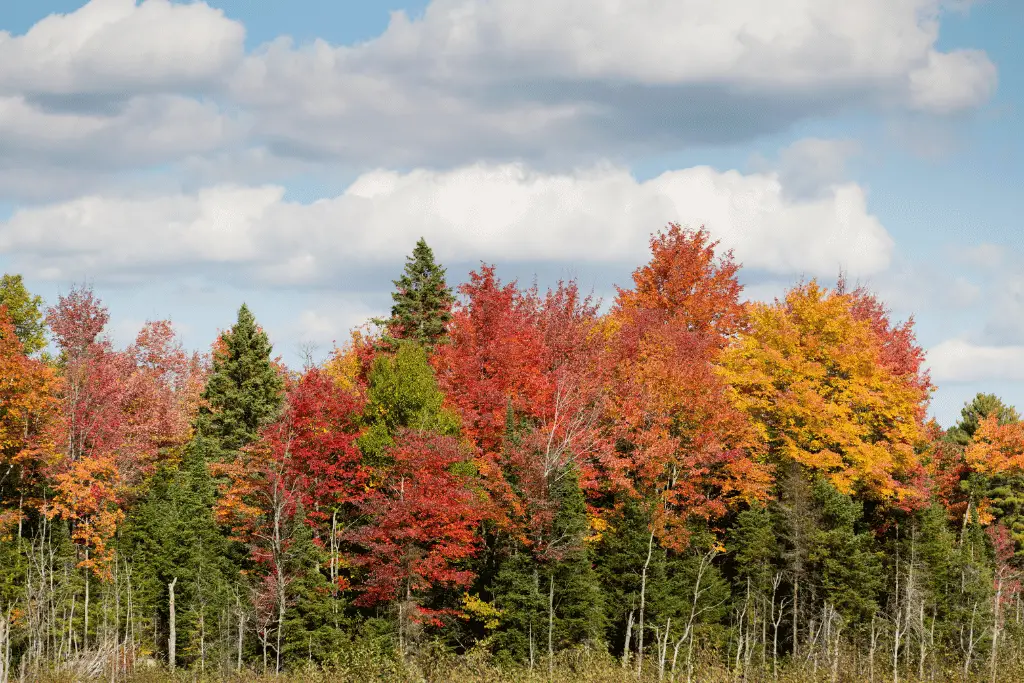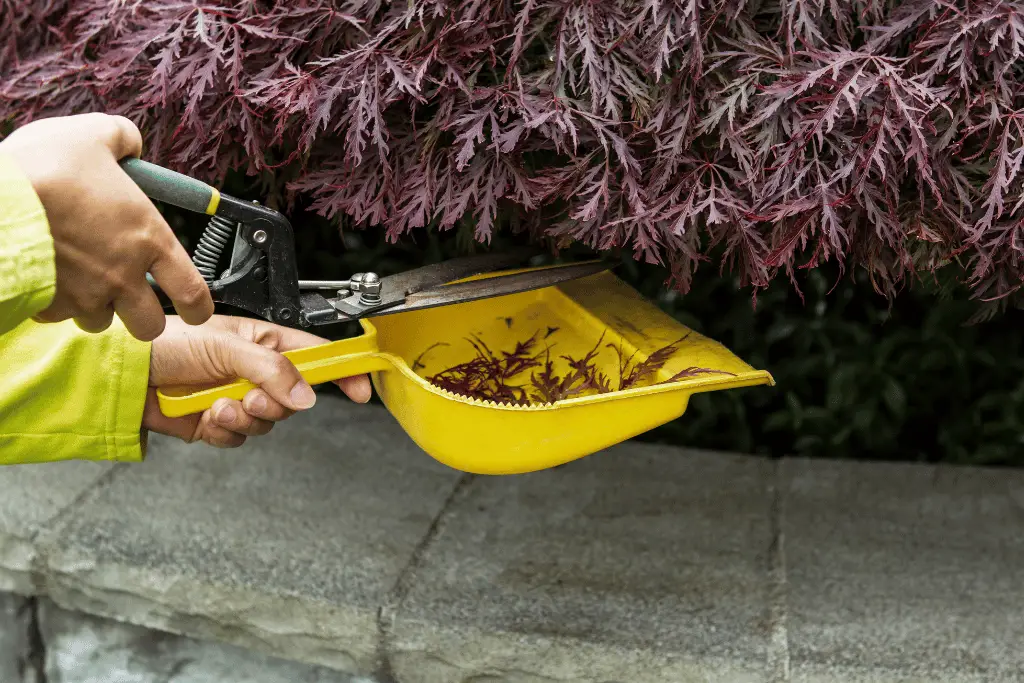
Maple trees, with their vibrant foliage and graceful branches, are a favorite in many landscapes. Proper maintenance, including regular pruning, is essential to ensure the health and beauty of these majestic trees. However, deciding when to trim your maple tree requires careful consideration, as timing plays a crucial role in the tree’s overall well-being. In this article, we’ll explore the best times to trim a maple tree to promote growth, maintain shape, and keep your outdoor space looking its best.
Understanding Maple Tree Growth Cycles:
Before diving into the ideal trimming times, it’s essential to grasp the growth cycles of maple trees. Most maples are deciduous, meaning they shed their leaves in the fall and remain bare through the winter months. Understanding this natural rhythm can guide us in determining the optimal times for pruning.
When is the Best Time to Trim a Maple Tree?

Understanding the optimal timing for maple tree pruning is essential for a successful and beneficial trimming session. Explore the seasons outlined below to ensure you make the most of each period’s unique advantages.
Late Winter to Early Spring: Dormant Season
One of the best times to trim a maple tree is during late winter to early spring, when the tree is still dormant. This period is ideal for structural pruning, as it allows for better visibility of the tree’s architecture without the distraction of leaves. Pruning during dormancy minimizes stress on the tree, as it’s not actively growing. This can help prevent excessive sap flow and reduce the risk of disease transmission.
Late Summer to Early Fall: Post-Growth Season
Another suitable time for maple tree trimming is late summer to early fall, after the tree has completed its annual growth spurt. This is when the tree is preparing for dormancy, and pruning during this period can help shape the tree and encourage proper branch spacing. Be cautious with late summer pruning, as cutting too close to fall may stimulate new growth that won’t have sufficient time to harden before winter.
Avoiding the Hazard of Spring and Early Summer Pruning:
While maple trees can be pruned during spring and early summer, it’s advisable to exercise caution during these months. This is the active growing season for the tree, and pruning during this time can lead to excessive sap loss and stress, potentially compromising the tree’s health. Additionally, pruning during the growing season may make the tree more susceptible to diseases and pest infestations.
Disease Prevention and Wound Healing:
Regardless of the season, it’s crucial to use proper pruning techniques to minimize the risk of disease. Make clean cuts, avoiding leaving jagged edges that can provide entry points for pathogens. Applying a pruning sealant is generally unnecessary, as maples have a natural ability to compartmentalize wounds. However, if you have concerns about disease in your area, consult with a local arborist for guidance.
Four Compelling Reasons to Trim Your Maple Tree

Maple trees stand as natural masterpieces in our landscapes, providing shade, beauty, and a touch of elegance. However, to keep them flourishing and resilient, regular pruning is essential. Delve into the benefits of pruning your maple tree, discovering how this simple act can contribute significantly to its health, robustness, and overall well-being.
1. Enhancing Aesthetic Appeal:
Perhaps the most visible benefit of trimming your maple tree is the enhancement of its aesthetic appeal. Pruning allows you to shape the tree, removing any unsightly or awkward branches that may hinder its natural beauty. By promoting a well-balanced canopy and a pleasing structure, you can transform your maple tree into a stunning focal point in your outdoor space.
2. Boosting Tree Health:
Trimming is a vital component of maintaining the overall health of your maple tree. Removing dead or diseased branches prevents the spread of infections and promotes a healthier tree. By eliminating these potential breeding grounds for pests and diseases, you provide your maple with a better chance to thrive, ensuring it remains a vibrant and integral part of your landscape.
3. Encouraging Robust Growth:
Regular pruning directs the energy of the tree towards the growth of strong, new branches. By eliminating weak or crossing branches, you create a more robust structure that can withstand environmental stressors such as wind, snow, and storms. This not only ensures the longevity of your maple tree but also minimizes the risk of limb breakage and property damage during adverse weather conditions.
4. Improving Sunlight Penetration:
Effective pruning opens up the canopy of your maple tree, allowing sunlight to penetrate the inner branches. This is crucial for the photosynthesis process, enabling the tree to produce the energy it needs to thrive. Adequate sunlight penetration contributes to uniform growth, lush foliage, and an overall healthier appearance for your maple tree.
How to Prune Maple Trees Effectively

Maple trees, with their striking foliage and graceful branches, are a popular addition to many landscapes. To ensure their continued health, shape, and vitality, it’s crucial to master the art of pruning. Proper pruning not only enhances the aesthetic appeal of your maple tree but also contributes to its overall well-being. In this comprehensive guide, we’ll walk you through the steps of effective maple tree pruning.
1. Understand Your Maple Tree:
Before you pick up your pruning shears, take a moment to understand the specific variety of maple tree you have. Different species may have unique growth patterns and requirements. Familiarize yourself with your tree’s natural shape and growth tendencies to guide your pruning strategy.
2. Choose the Right Tools:
Selecting the proper tools is essential for effective pruning. Sharp, clean pruning shears or loppers are ideal for smaller branches, while a pruning saw may be necessary for thicker limbs. Ensure your tools are sanitized to prevent the spread of diseases between cuts.
3. Identify Dead and Diseased Branches:
Start by inspecting your maple tree for dead, damaged, or diseased branches. These should be your primary targets for removal. Cutting away these compromised branches not only improves the tree’s appearance but also prevents the spread of diseases and encourages new, healthy growth.
4. Focus on Crossed or Rubbing Branches:
Look for branches that cross or rub against each other. These can create wounds and provide entry points for diseases. Remove the weaker or less desirable of the two branches to improve air circulation and reduce the risk of damage.
5. Encourage Good Structure:
Aim for a well-balanced and open canopy. Remove branches that grow inward or directly upward, as these can hinder healthy growth patterns. Instead, promote branches with wide angles to the trunk, as they are more resilient and less prone to breakage.
6. Mindful Thinning for Sunlight Penetration:
Thin out the canopy selectively to allow sunlight to penetrate the interior of the tree. This promotes even growth and helps maintain a healthy, vibrant appearance. However, be cautious not to remove too much foliage at once, as maple trees can be sensitive to drastic pruning.
7. Pruning Timing:
Choose the appropriate time for pruning. Late winter to early spring, during the dormant season, is generally optimal. This allows the tree to focus on healing without the added stress of active growth. Late summer to early fall is also acceptable for lighter pruning tasks.
8. Make Clean Cuts:
When making cuts, ensure they are clean and smooth. Avoid leaving stubs, as these can invite diseases. Cut just outside the branch collar—the swollen area where the branch meets the trunk—to promote faster healing.
9. Consider Professional Advice:
If you’re unsure about the best approach for pruning your maple tree, consider consulting with a professional arborist. They can provide personalized guidance based on your tree’s specific needs and characteristics.
By following these steps, you’ll be well on your way to effectively pruning your maple tree, ensuring its health, longevity, and aesthetic appeal for years to come. Remember, each pruning session is an opportunity to sculpt and care for your maple, contributing to the beauty of your outdoor space.
Final Words
In conclusion, the decision to trim your maple tree is not just a matter of aesthetics; it’s a commitment to the overall well-being of a natural masterpiece in your landscape. By understanding the optimal times to prune, choosing the right techniques, and acknowledging the specific needs of your maple, you embark on a journey that goes beyond shaping branches.
Effective maple tree pruning is an investment in its health, resilience, and longevity. As you delicately remove deadwood, strategically thin the canopy, and foster robust growth, you’re creating an environment where your maple can thrive. The benefits extend beyond visual appeal, encompassing a healthier tree that can withstand the challenges of its surroundings.
So, whether you’re drawn to the artistic endeavor of shaping your maple’s silhouette or driven by a desire to ensure its vitality, pruning becomes a meaningful part of your role as a caretaker of nature. As the seasons change and your maple tree evolves, the careful attention you provide through effective pruning becomes a testament to the harmonious relationship between humanity and the natural world.






